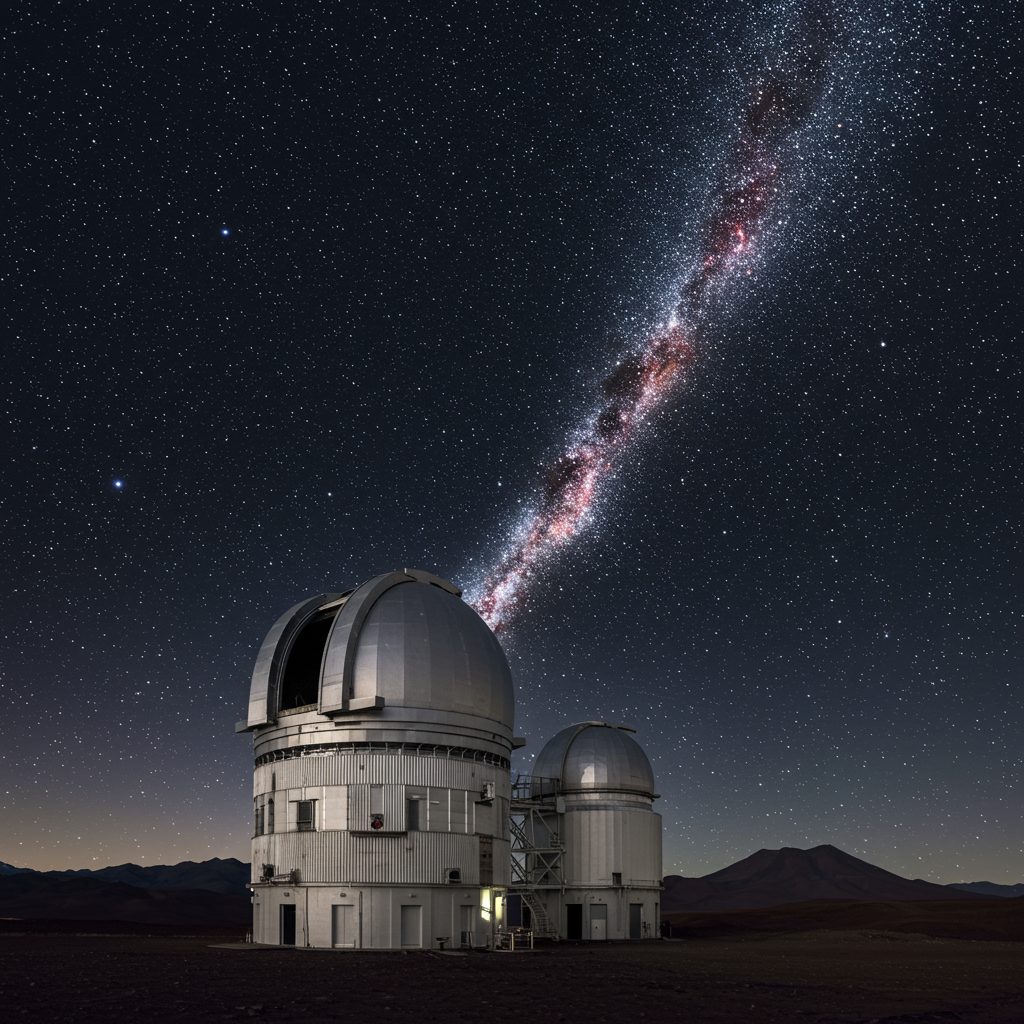SpaceX has fundamentally reshaped the landscape of global connectivity, launching its 10,000th Starlink internet satellite into orbit. This monumental achievement, reached in late October 2025, underscores the ambitious scale of Elon Musk’s vision to deliver high-speed, low-latency internet access to every corner of the planet. More than a numerical milestone, it represents a pivotal moment in the ongoing race to build vast satellite mega-constellations, promising unprecedented access while also raising critical questions about orbital mechanics and responsible space utilization.
The 10,000th Starlink Satellite: A New Era in Orbit
On October 19 and 20, 2025, SpaceX achieved this extraordinary feat by deploying 56 new Starlink satellites across two separate Falcon 9 rocket launches from both Florida and California. These missions collectively propelled the total number of Starlink spacecraft launched past the 10,000 mark. The journey from initial prototypes in February 2018 to this colossal network has been rapid, culminating in commercial service by 2021 and now serving millions globally.
Breaking Down the Numbers: Launched vs. Operational
While 10,006 Starlink satellites have been sent skyward, according to meticulous tracking by astrophysicist Jonathan McDowell, not all are actively beaming internet. Approximately 8,608 to 8,680 satellites are currently in orbit, with about 7,448 actively operational as of late October 2025. This difference highlights SpaceX’s active management of its constellation. Starlink satellites are engineered for a roughly five-year lifespan before they are intentionally de-orbited, burning up harmlessly in Earth’s atmosphere to prevent space debris accumulation. Around 1,400 satellites have already been decommissioned through this process.
The Falcon 9’s Unprecedented Pace
The milestone launches also marked other significant achievements for SpaceX. One of the October 2025 missions was the 132nd Falcon 9 launch of the year, tying the rocket’s previous annual record. With over two months still left in 2025, SpaceX is poised to set a new record for annual launches by a single rocket family. Furthermore, one of the Falcon 9 boosters involved in these missions (Booster 1067) completed its 31st flight, setting a new company record for reusability. This remarkable operational tempo, leveraging a fleet of over 20 Falcon 9 boosters certified for up to 40 flights each, is central to Starlink’s rapid expansion and cost efficiency.
Starlink’s Ambitious Vision and Technological Edge
SpaceX’s vision for Starlink extends far beyond its current impressive scale. The company holds regulatory approval to launch 12,000 satellites and has plans for an eventual constellation of over 30,000. This massive undertaking aims to deliver robust, low-latency internet to underserved and remote areas worldwide, transforming connectivity for millions.
From Prototypes to Global Coverage
The evolution of Starlink technology has been swift. Starting with the “Tintin A” and “Tintin B” prototypes, launched in 2018, the satellites have steadily increased in capability. Early Falcon 9 launches carried 60 satellites, but larger, more advanced designs, like the V2 Mini with their 100-foot solar arrays, now fit about 28 per flight. Once deployed at low altitudes, these satellites use plasma engines to ascend to their operational orbits around 332 miles (535 kilometers) above Earth.
Direct-to-Cell and Beyond: Future of Connectivity
Beyond traditional fixed internet, Starlink is aggressively expanding its services. By August 2025, the network had surpassed 7 million global subscribers across 150 territories. A major innovation is the direct-to-cell technology, recently launched for T-Mobile US subscribers. This allows unmodified smartphones to connect directly to satellites for continuous video calls, messaging, and data, even in remote areas. This feature signifies a breakthrough for mobile connectivity, promising to further bridge digital divides and offer crucial communication in disaster zones. The network also supports seamless beam switching and provides connectivity to mobile platforms like ships and aircraft.
Next-Gen Satellites and Starship Integration
Looking ahead, the next generation of Starlink satellites, known as V3, will be significantly larger than current models. They are too big for the Falcon 9 and are planned for launch in batches of approximately 60 aboard SpaceX’s new Starship rocket, potentially beginning next year. This integration with Starship promises to accelerate Starlink’s deployment capabilities even further, reinforcing SpaceX’s long-term dominance in orbital infrastructure.
Navigating Challenges and the Evolving Space Landscape
The rapid growth of Starlink and other planned mega-constellations heralds a new era of space utilization but also brings complex challenges. The sheer volume of satellites in low Earth orbit has sparked widespread debate among the scientific community and policymakers alike.
Orbital Crowding and Space Debris Concerns
The proliferation of thousands of satellites by multiple entities, including Amazon’s Project Kuiper and various European and Chinese initiatives, raises significant concerns about overcrowding in low Earth orbit. This could increase the risk of collisions, generating more space debris and potentially making future space operations more hazardous. Astronomers are particularly worried about light pollution and interference with ground-based observations, despite SpaceX’s efforts to mitigate reflectivity with design adjustments like visors. SpaceX alone operates up to 70% of all active satellites in orbit, according to estimates by the European Space Agency.
Regulatory Scrutiny and Global Impact
While Starlink aims to deliver global connectivity, its operations are not without scrutiny. A bipartisan U.S. Congressional committee has reportedly initiated an investigation into Starlink’s alleged provision of internet access to scam centers operating in Myanmar. These centers are accused of defrauding billions of dollars, and satellite imagery reportedly shows Starlink services being used in heavily guarded compounds. This inquiry highlights the geopolitical implications of widespread satellite internet and the need for robust oversight.
The Rise of Mega-Constellation Competition
SpaceX’s success has spurred intense competition. Amazon’s Project Kuiper, alongside governmental and commercial ventures in Europe and China, are all developing their own large-scale satellite internet networks. This competitive landscape is driving innovation but also intensifying the need for international cooperation on orbital traffic management and regulatory frameworks to ensure the long-term sustainability of space.
The Broader Impact of SpaceX’s Satellite Dominance
Starlink’s expansion represents more than just a technological marvel; it’s a transformative force with far-reaching societal and economic implications. The network’s latency improvements and bandwidth capabilities often outperform many terrestrial networks, with speeds frequently exceeding 100 Mbps in tests.
Bridging the Digital Divide
By providing high-speed internet in remote and underserved regions, Starlink is actively working to bridge the global digital divide. This access is crucial for education, economic development, and emergency services in areas where traditional broadband infrastructure is non-existent or inadequate. The service’s rapid growth, adding an average of 12,200 customers per day in recent months, underscores its vital role in expanding connectivity.
Economic Influence and Disrupting Broadband
Industry analysts anticipate that Starlink’s rapid expansion will profoundly impact global internet infrastructure. It is poised to disrupt traditional broadband providers, stimulating competition and offering new, often more affordable, high-speed options in emerging markets, such as India where regulatory approvals are nearing completion. The revenue generated by Starlink’s growing customer base also fuels further innovation, including the development of Starship for even larger satellite deployments, solidifying its position as a cornerstone of future digital infrastructure.
Frequently Asked Questions
How many Starlink satellites are currently operational, and what is their lifespan?
As of late October 2025, while SpaceX has launched over 10,000 Starlink satellites, approximately 8,608 to 8,680 are in orbit, with about 7,448 actively providing internet service. The discrepancy is due to some satellites being newly launched but not yet operational, and others being decommissioned. Each Starlink satellite is designed for an operational lifespan of roughly five years. After this period, they are intentionally de-orbited, guided to burn up harmlessly in Earth’s atmosphere to mitigate space debris.
What are the primary concerns associated with Starlink’s mega-constellation expansion?
The rapid expansion of Starlink and similar mega-constellations raises significant concerns across several fronts. Astronomers worry about light pollution interfering with ground-based observations, although SpaceX is implementing design features like visors to reduce reflectivity. More critically, the increasing number of objects in low Earth orbit elevates the risk of satellite collisions, which could generate dangerous space debris. This overcrowding poses challenges for future space operations and the long-term sustainability of the orbital environment, prompting calls for greater international regulation and coordination.
How is Starlink addressing global connectivity beyond traditional home internet?
Starlink is aggressively expanding its capabilities beyond fixed home internet to provide ubiquitous global connectivity. A key innovation is its direct-to-cell technology, enabling unmodified smartphones to connect directly to satellites for continuous data, video, voice, and messaging, even in remote areas without terrestrial infrastructure. The network also supports mobile platforms, offering high-speed, low-latency internet to ships, aircraft, and vehicles. These advancements are crucial for disaster relief, remote work, and bridging digital divides in regions historically underserved by traditional broadband.
Conclusion: What Lies Ahead for Starlink and Space
SpaceX’s achievement of launching its 10,000th Starlink satellite marks a profound moment in the evolution of global connectivity. It’s a testament to the power of reusable rocket technology and an audacious vision. While the benefits of widespread internet access are undeniable, particularly for underserved populations, the challenges of orbital crowding, regulatory oversight, and competition are equally significant. As SpaceX pushes toward 30,000 or more satellites, the focus will increasingly shift not just to launching hardware, but to responsibly managing the orbital environment and ensuring equitable, secure, and sustainable access to this transformative technology for decades to come.



